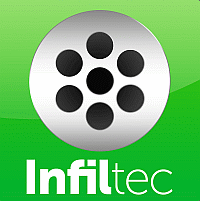- Search enginz all about second hand book search, including book coupons.
- Bookfinder compare used book prices.
- BestBookBuys compare new book prices.
- Amazon Art of Electronics by Horowitz and Hill (THE BIBLE!).
- Amazon Active Filter Cookbook by Don Lancaster.
- Amazon Troubleshooting Analog Circuits by Bob Pease (THE GURU!).
- Amazon The Art and Science of Analog Circuit Design by Jim Williams.
- Amazon
Analog Circuit Design : Art, Science and Personalities edited by Jim Williams.
CHIP SEARCH - FindChips
- StockNet
- QuestLink
- ChipCenter
- Need2Buy
- USBid
- CMB Components
-
Part Miner
CATALOG/ONLINE SALES - DigiKey
- Mouser
- Hosfelt
- Allied
- Newark
- Jameco
-
SimCo,
OKW,
SerPac,
PacTec,
Fibox
inexpensive plastic enclosures.
MANUFACTURERS/DATA SHEETS - Burr-Brown
- Dallas Semiconductor
- Linear Technology
- Maxim
- Microchip
- National
- Texas Instruments
-
Analog Devices
DEALING WITH SURFACE MOUNT ELECTRONIC COMPONENTS
- How to solder surface mount parts using a toaster oven.
 Brown Dog Component Adaptors DIP adaptors for surface mount chips.
Brown Dog Component Adaptors DIP adaptors for surface mount chips.
 Digikey: Surfboard
adaptors to go from surface mount to through-hole (pdf file of
catalog page).
Digikey: Surfboard
adaptors to go from surface mount to through-hole (pdf file of
catalog page).
- DIY Air-pencil soldering iron how to make one for under $20.
-
Surface Mount Secrets
MISC - Electronic Schematics on the Web
- The Guru's Lair Don Lancaster's extensive links
- GPS boards OEM board GPS for $79.
- Newsgroups: sci.electronics.basics, sci.electronics.components and sci.electronics.design.
BOOKS
- Circuit Cellar magazine for embedded control applications.
- Microchip PIC 8-bit microprocessors
- PicBasicPro for programming PIC microprocessors, and email list with searchable archives.
- microCode Studio PICBasicPro Edition.
- CCS PIC C for programming PIC microprocessors (user exchange).
- Peter H. Anderson resources on PIC embedded processor control
- Parallax Basic Stamp processors - I got introduced to microprocessors here
- DataQ DI-154RS $24.95 Data logger, 10 Bit A/D Serial Port Starter Kit.
- Newsgroups: comp.dsp, alt.microcontrollers.8bit and comp.arch.embedded.
- PIC Tutorial: Understanding & Programming the PIC16C84 A beginners' tutorial.
- PICLIST email list for people interested in the Microchip PIC.
 ScienceLab lab equipment and chemical supply.
ScienceLab lab equipment and chemical supply.
- ForceField recycled magnets
- Grainger hardware distributor (magnets, etc.)
- McMaster Carr hardware distributor (magnets, nuts, bolts, metals, etc.)
- BPECS: PCB Circuit Design Package (very inexpensive.)
- CADSOFT: Eagle PCB Circuit Design Package.
- Electronic Assembly News list of pcb sources.
- AP Circuits quickturn prototype pcb's for under $100.
- EP Circuits quickturn prototype pcb's can include solder mask.
- Olimex Ltd. in Bulgaria lowest proto prices, 2 week delivery to US via air mail. (4"x6" PCB, double-side, WITH silkscreen + solder mask, for $26 plus $8 Airmail)
- Advanced Circuits good prices on production runs of pcb's.
- Pulsar great prices on production runs of pcb's.
- NeatSite links related to PCBs.
- Making Printed Circuit Boards book by Jan Alexson.
- Sensors an awesome link page!
- Vernier Science Hardware and Software for the Classroom.
- Tinkers Guild Resources for Hands-on Science - sells CD of projects from the Scientifc American Amateur Scientist column.
- Society for Amateur Scientists online projects and supplies.
- Crackpot Inventor original electronic devices, tools for clockmaking and repair, and a variety of other unusual handmade products.
- Mad Scientist Network the laboratory that never sleeps.
- SETI@Home join the search for extraterrestrial intelligence. Click here for my latest statistics.
- My Seismograph page how to build a seismograph.
- My Business Page Infiltec Air Leakage Control.
- My Other Link Page building science, books, travel, etc...
- My Fun page jokes and travel photos.
- My Gold Prospecting Near Washington, DC Page.
- My SID-GRB@home how to build a simple VLF radio receiver that can detect Gamma-Ray Bursts (GRB) from the edge of the universe.
This page was last updated by on February 22, 2003.
Please send my your suggestions for improving this page
